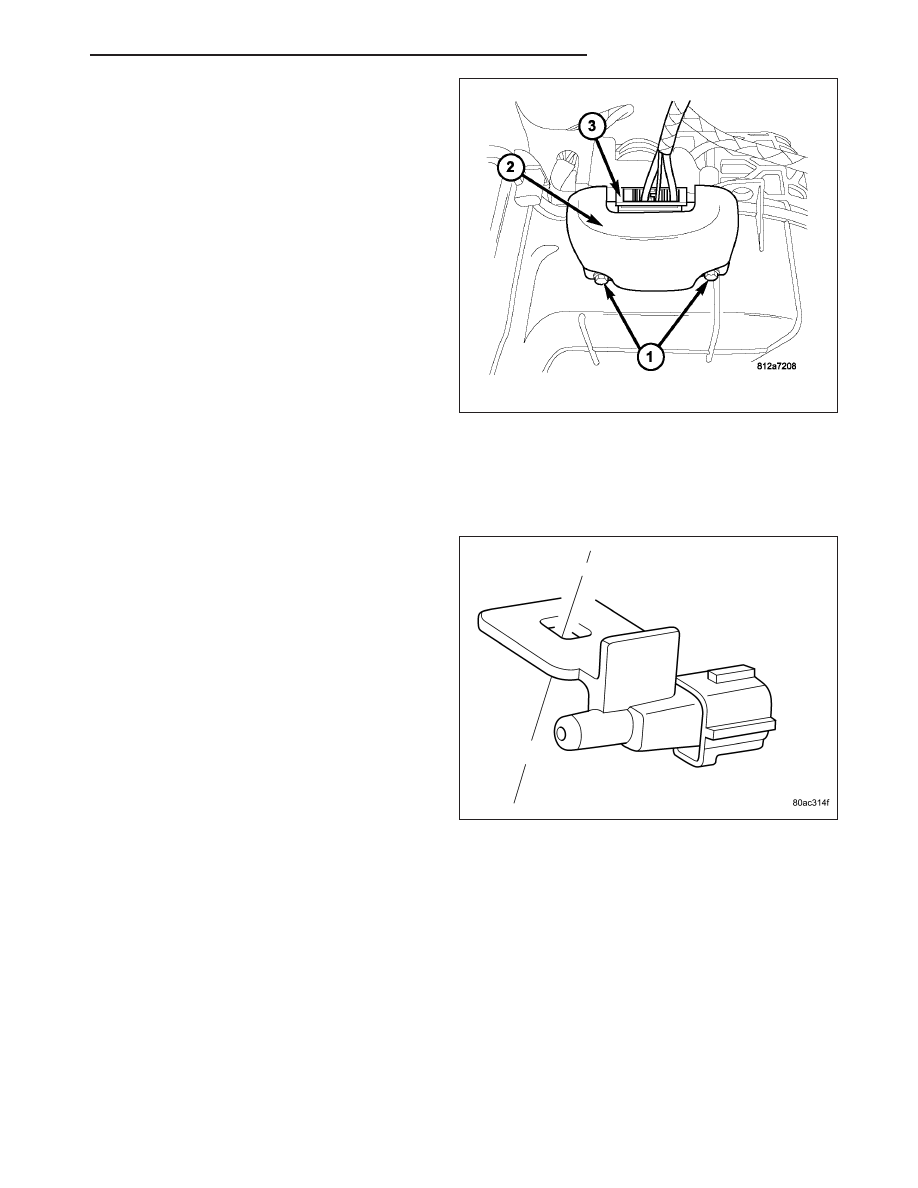Content .. 1540 1541 1542 1543 ..
Dodge Durango (HB). Manual - part 1542

4. Install the trim cover (2) over the blower motor
resistor.
5. Install the two screws (1) that secure the trim cover
to the front HVAC housing. Tighten the screws to 2
N·m (17 in. lbs.).
6. Reconnect the negative battery cable.
SENSOR-AMBIENT AIR TEMPERATURE
DESCRIPTION
The ambient air temperature sensor is a variable
resistor that monitors the air temperature outside of
the vehicle. The ambient air temperature sensor is
mounted onto the inside of the front bumper beam
and its data is used by the heating-A/C system to
maintain optimum cabin temperature levels.
OPERATION
The ambient air temperature sensor is a variable resistor that operates on a ground circuit and a 5-volt reference
signal circuit sent by the front control module (FCM) through a two-wire lead and connector of the vehicle wire
harness. The ambient air temperature sensor changes its internal resistance in response to changes in the outside
air temperature, which either increases or decreases the reference signal voltage read by the FCM. The FCM con-
verts and broadcasts the sensor data over the controller area network (CAN) B bus, where it is read by the A/C-
heater control and other various vehicle control modules.
The ambient air temperature sensor is diagnosed using the scan tool. Refer to 9 - Engine Electrical Diagnostics for
more information.
The ambient air temperature sensor cannot be adjusted or repaired and, if faulty or damaged, it must be replaced.
HB
CONTROLS - FRONT
24 - 361